
The chamois or Alpine chamois is a species of goat-antelope native to the mountains in Southern Europe, from the Pyrenees, the Alps, the Apennines, the Dinarides, the Tatra to the Carpathian Mountains, the Balkan Mountains, the Rila–Rhodope massif, Pindus, the northeastern mountains of Turkey, and the Caucasus. It has also been introduced to the South Island of New Zealand. Some subspecies of chamois are strictly protected in the EU under the European Habitats Directive.

Aoraki / Mount Cook National Park is a national park located in the central-west of the South Island of New Zealand. It was established in October 1953 and takes its name from the highest mountain in New Zealand, Aoraki / Mount Cook. The area of the park is 707 km2 (273 sq mi), and it shares a border with Westland Tai Poutini National Park along the Main Divide of the Southern Alps. The national park consists of reserves that were established as early as 1885 to protect the area's significant landscape and vegetation. Glaciers cover 40% of the park, including the county's largest glacier, Haupapa / Tasman Glacier. In 1990, the park was included in the area designated as the Te Wāhipounamu World Heritage Site. The park is managed by the Department of Conservation (DOC) alongside Ngāi Tahu, the iwi who are mana whenua in the region.

Mount Hutt rises to the west of the Canterbury Plains in the South Island of New Zealand, above the braided upper reaches of the Rakaia River, and 80 kilometres west of Christchurch. Its summit is 2190 metres above sea level.

Nelson Lakes National Park is in the South Island of New Zealand, at the northern end of the Southern Alps. It was created in 1956. The park contains beech forests, multiple lakes, snow-covered mountains and valleys created by glaciers during the ice ages.
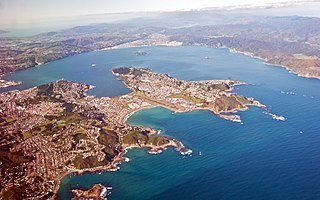
Wellington Harbour, officially called Wellington Harbour / Port Nicholson, is a large natural harbour on the southern tip of New Zealand's North Island. The harbour entrance is from Cook Strait. Central Wellington is located on parts of the western and southern sides of the harbour, and the suburban area of Lower Hutt is to the north and east.
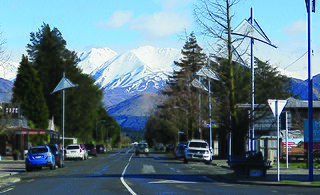
Methven is a small town in the Canterbury region of the South Island of New Zealand. It is located near the western edge of the Canterbury Plains, 35 km (22 mi) north of Ashburton and 95 km (59 mi) west of Christchurch, and at an elevation of 320 m (1,050 ft). The town is a service centre for agriculture in the surrounding area, and is a base for skiing at the nearby Mount Hutt skifield. The town slogan is "Amazing Space".

Lycaenidae is the second-largest family of butterflies, with over 6,000 species worldwide, whose members are also called gossamer-winged butterflies. They constitute about 30% of the known butterfly species.

Lake Pukaki is the largest of three roughly parallel alpine lakes running north–south along the northern edge of the Mackenzie Basin on New Zealand's South Island. The others are Lakes Tekapo and Ōhau. All three lakes were formed when the terminal moraines of receding glaciers blocked their respective valleys, forming moraine-dammed lakes. The Alps2Ocean mountain bike trail follows the edge of Lake Pukaki for part of its length.

The large copper is a butterfly of the family Lycaenidae. L. dispar has been commonly arranged into three subspecies: L. dispar dispar, (single-brooded) which was commonly found in England, but is now extinct, L. d. batavus, (single-brooded) can be found in the Netherlands and has unsuccessfully been reintroduced into the United Kingdom, and lastly, L. d. rutilus, (double-brooded) which is widespread across central and southern Europe. The latter has been declining in many European countries, due to habitat loss. Currently L. dispar is in severe decline in northwest Europe, but expanding in central and northern Europe.

Cass is a small locality in inland Canterbury on New Zealand's South Island, near Arthur's Pass. It is known for its small railway station which was the subject of the 1936 painting Cass by Rita Angus, voted in 2006 New Zealand's favourite work of art. It is also the location of a University of Canterbury field station established in 1914. Cass currently has a single permanent resident.

The scarce copper is a butterfly of the family Lycaenidae.
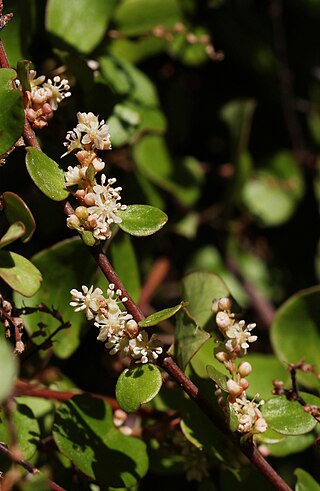
Muehlenbeckia complexa is a plant commonly known as pohuehue, although this name also applies to some other climbers such as Muehlenbeckia australis.
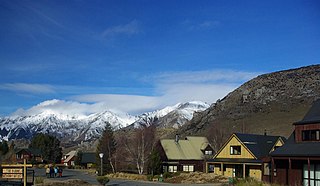
Castle Hill Village is an alpine village in Canterbury, New Zealand that started in 1982.
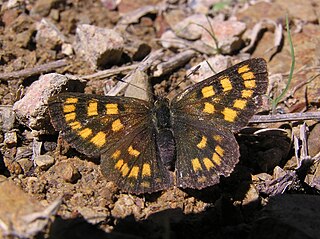
Lycaena feredayi, the glade copper, is a butterfly of the family Lycaenidae. It is endemic to New Zealand.

Lycaena salustius, the common copper or the coastal copper, is a butterfly of the family Lycaenidae. It is endemic to New Zealand. It is known in the Māori language as pepe para riki, a name that is shared with a few other members of the genus Lycaena native to New Zealand.
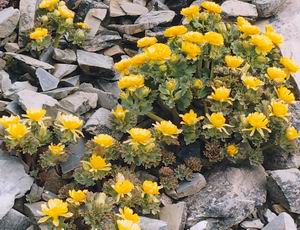
Ranunculus acraeus is a species of flowering plant in the buttercup family, Ranunculaceae, found in New Zealand. This rare and native species strictly grows on an alpine habitat, hence the name acraeus, meaning “on high”. The plant grows about 50 cm (20 in) in width, and is covered in beautiful, bright yellow flowers. It may be mistaken for R. piliferus but research has shown R. acraeus to be its own distinctive species.

Lycaena boldenarum, the boulder copper, is a species of butterfly which is endemic to New Zealand, it is found on both North Island and South Island in a wide variety of open habitats including grassland, shingle and sand dunes. They are normally only active in bright sunny conditions and their flight is usually low to the ground. The boldenarum part of the species name given by the Scottish entomologist Adam White in honour of his first wife, Helen and her sister Frances, whose maiden name was Bolden. It shares the Maori name pepe para riki with two congeners the common copper and the glade copper.
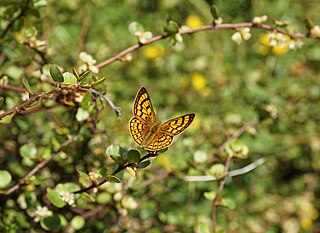
Lycaena rauparaha, Rauparaha's copper, Fereday’s copper or mokarakare is a species of butterfly endemic to New Zealand. It acquired its English common name because it occurred in the same coastal areas as the rangatira (chief) and war leader of Ngāti Toa Maori, Te Rauparaha.

Dasyuris partheniata is a species of moth in the family Geometridae. It is endemic to New Zealand. It is classified as "At Risk, Declining" by the Department of Conservation.

Hierodoris eremita is a moth of the family Oecophoridae. It is endemic to New Zealand and found in the areas around Aoraki / Mount Cook and Westland Tai Poutini National Park areas. This species inhabits alpine herbfields at altitudes of around 900–1400 m. Larvae are said to have been reared on the leaves of plants in the Celmisia genus. Pupation happens on the host plant. The adults of this species is on the wing between December and June. This species is day flying.




















